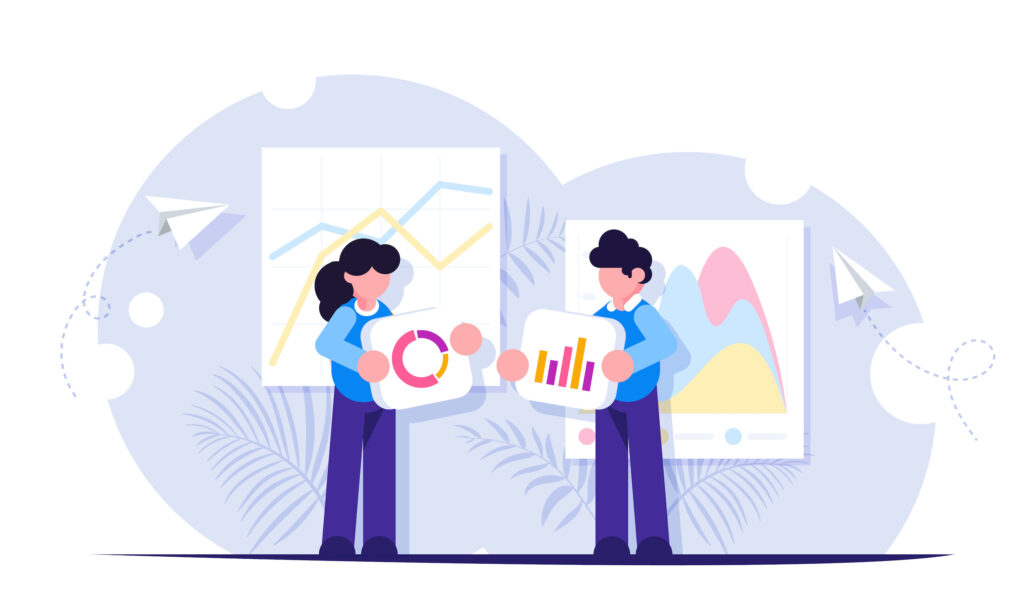How Data Visualization Will Help Your Business

With the rise of big data, more companies are collecting and storing vast amounts of information about their business, revenue, and customers. However, while the adoption of big data has accelerated significantly in recent years, many companies are struggling to extract meaningful information from the abundance of data at their fingertips. Others are unable to take full advantage of their data due to cumbersome dashboards that are difficult to use and laborious, manual data retrieval methods.
Structured vs. Unstructured Data: 3 Key Differences

In today’s digital economy, data is a company’s biggest asset. Though data comes in many forms, identifying whether structured or unstructured data will meet your business’s needs is of the utmost importance, and ultimately determines which method of analysis to use.
What is Sentiment Analysis and How Does It Work?

Sentiment analysis is a machine learning technique that employs text analysis algorithms, natural language processing (NLP), and statistics to analyze customer sentiment — classifying opinions into positive, negative, or neutral categories. Understanding a client’s reactions on an emotional level is vital for unearthing the deepest insights required to perfect the customer experience. For this reason, companies are in a race to understand their customers — what they’re saying, how they’re saying it, and what they mean.
An estimated 80% of the world’s data is unstructured, the majority of which is unstructured text such as customer reviews, feedback forms, surveys, social media data, and the like. This data is hard to analyze, understand, and sort through, making the process time-consuming and expensive. Sentiment analysis, also known as opinion mining or emotion AI, uses NLP to understand the context of data, and instill structure into it via tagging and categorizing.
By analyzing unstructured customer feedback at scale, such as customer reviews and social media conversations, businesses are better able to listen to their customers and make informed decisions relating to their products and services.
While there are various types of sentiment analysis approaches, those with the highest level of adoption include fine-grained sentiment analysis, emotion detection, aspect-based sentiment analysis, and intent analysis.
What Does the Future of Digital Marketing Have in Store?

Embracing digital transformation within your organization will be vital to your business’s success in the near to long-term future. Whether you’re already immersed in the digital economy, or transitioning towards fully embracing what it has to offer, there’s no question that it will continue to change rapidly. Digital marketing is evolving at a similar pace, and trends suggest a drastically different landscape in the coming years. Fortunately, businesses that embrace digital transformation will be able to harness the power of data and in turn improve customer experience and product innovation, while adding more tools to their marketing toolbelt.
Below we discuss what we can expect from digital marketing in the future — these trends will drastically change the industry while allowing businesses to make the most of their data on the path to digital transformation.
What Do Data Analytics Companies Actually Do?

Data analytics is the science of analyzing raw data using various techniques and processes to make conclusions about that data, and eventually package it so that it can provide insights. These techniques can reveal trends, patterns and metrics that would otherwise be lost in the mass of information that is generated by a business in their daily operations. Companies can use these valuable findings to inform and improve how they do business, engage with customers, and make decisions related to their products and services.
Analytics is the process of consuming and transforming data so that it answers important questions about your business. Data analytics companies follow a clear process when conducting data analysis and rely on the analytics maturity model (AMM) to identify and present valuable information, helping organizations to improve their internal and external processes. The analytics maturity process involves an initial stage of data evangelism, followed by putting together the infrastructure, and eventually conducting various levels of analytics.
The process isn’t necessarily linear and when it comes to conducting analytics, very often multiple iterations are required to ensure that the questions being asked have been answered. Below we discuss the analytics maturity process in greater detail to provide greater insight into what each of its stages entails.
Data Analytics: Why Data is Your Company’s Biggest Asset

It is official – data is now the most valuable asset in the world, ahead of oil, according to The Economist. The shift comes as no surprise — 97% of businesses use data to power their business opportunities, and for 76% of businesses, it serves as an integral part of forming a business strategy. But, what makes data so valuable? In this article, we look at why data is an asset to any organization, and how data analytics can help you make the most of this asset.
What is Data Analytics?
Data analytics is the analysis and interpretation of raw data using a variety of data analytics tools to come up with insights and trends to help companies reach their goals.
Different Types of Data Analytics?
There are many different types of data analytics, largely depending on the question the data analyst or data analytics company is trying to answer. This includes predictive, prescriptive, diagnostic, and descriptive data.
Why is Data the Most Important Asset in Your Organization?
Put simply, data is customer information that, when analyzed and monitored correctly, is able to provide insights into your existing and potential customers. Clean, organized, and up-to-date data is an asset because it can help your company meaningfully engage with customers, make business decisions with confidence, add value to the organization, and better inform product and service development.
